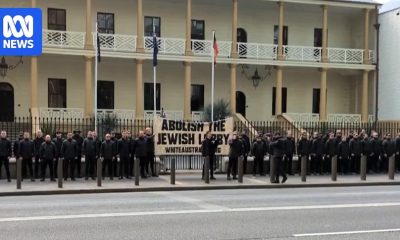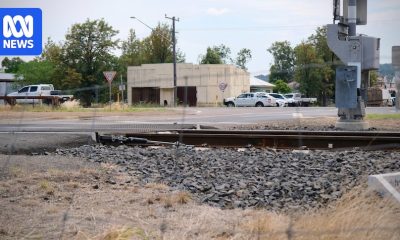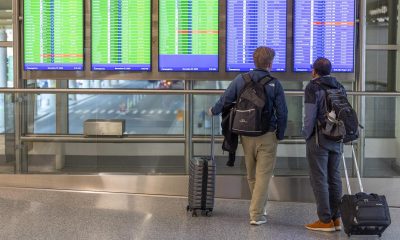Science
SLS Core Stage Green Run campaign moving into propulsion system checkouts – NASASpaceflight.com
Boeing is getting ready to conduct the next phase of the Green Run test campaign…

Boeing is getting ready to conduct the next phase of the Green Run test campaign for NASA’s first Space Launch System (SLS) Core Stage. The second and third test cases were recently completed in the B-2 Test Stand at the NASAs Stennis Space Center in Mississippi.
Test case four begins this week and test case five after that will checkout the new stage’s Main Propulsion System hardware elements, performing fluid system leak checks and functional testing of the hydraulic thrust vector control (TVC) systems and four RS-25 engines.
Test case three complete
The NASA and contractor teams running the Green Run campaign continue expanding integrated system checkouts, bringing up all previously verified equipment in the next phase of tests that will validate the stage’s propulsion and mechanical systems.
Health checks of computer systems on the new rocket stage and in the refurbished test complex were first run in late June, followed by a verification of safing routines last week. The computer health tests and ground system command and control safety verifications were the second phase of the Green Run campaign that began with arrival of the first Core Stage at the B Test Complex in January.
A total of eight test cases will be performed over the course of this year, iteratively building up to the seventh and eighth tests: the SLS Program’s first propellant loading of a Core Stage followed by an inaugural eight-minute, flight-duration firing while held down in the stand.
NASA’s Green Run test series for the SLS rocket’s core stage is an important step toward safely launching SLS and @NASA_Orion beyond Earth’s orbit forward to the Moon for the agencys #Artemis program. LEARN MORE about the test campaign >> https://t.co/AUlshoRg5s
— NASA_SLS (@NASA_SLS) July 13, 2020
Test case three was completed in early July, which ran through safing routines and their primary and emergency command paths.
“There’s a series of safeguards we have that we need to test ,and we call this our safing checks,” John Cipoletti, Launch Team Lead and Green Run Deputy for Boeing, said in February. “There’s a way for the Stage Controller to command the vehicle to shut down, and there’s two paths for that.”
Boeing’s Stage Controller is a computer system that conducts the Green Run tests of the Core Stage. It interfaces with the stage flight computers and software directly and provides interfaces to the test control team for the systems of the stage and the test stand.
“We’re going to make sure both paths work. And then there’s an emergency command that we can send from the stand through the vehicle if we lose communication with the vehicle through its downlink and downlist and uplink, and that’s a hard line. And we’ll check to make sure that that hard line works so that we have all of our emergency safing in place. And that’s our safing check procedure.”
Continuing work during COVID and weather delays:
Test cases two and three were the first performed with Core Stage systems powered up in the stand. The test team at the Stennis Space Center in southern Mississippi was kept away from work for two months beginning in mid-March due to the COVID-19 pandemic.
A deliberate, phased return of essential personnel began in mid-May to complete preparations for the second and third test cases. “Prior to the COVID shutdown, we had gotten within five days of finishing up that amount of work,” Mark Nappi, Boeing Green Run Test Manager, said in late June. “Then of course we had the shutdown. We were shut down for nearly sixty days, came back and finished up that little bit of work, and then got into a place where we could start powering up.”
Another week was lost during power up test preparations when Tropical Storm Cristobal passed over the area in early June, forcing a work stoppage at Stennis.
From here, the plan is to continue with a normal pace of work to finish the Green Run campaign this year.
B Test Stand at Stennis Space Center on June 23; B-1 position foreground, B-2 background. Credit: NASA/SSC.
“Our schedule from here on out is really a nominal schedule,” Nappi said on June 26. “We’ve instituted the social distancing, we’ve instituted the masks, we’ve instituted the cleaning, all that to keep our folks safe.”
“We re-forecasted our schedule based on coming back to work on May 14th, and then taking thirty days to get to power up, and then being able to run somewhat nominally. And we ended up with a Wet Dress

-

 Noosa News18 hours ago
Noosa News18 hours agoPrincess Anne is coming to Australia. Here’s what we know of her plans
-

 General5 hours ago
General5 hours agoPolice allowed neo-Nazi protest outside NSW parliament
-

 General7 hours ago
General7 hours agoCommunity devastated after freight train kills one-year-old girl near Narrabri
-

 General21 hours ago
General21 hours agoTravellers face cancelled flights over US shutdown
